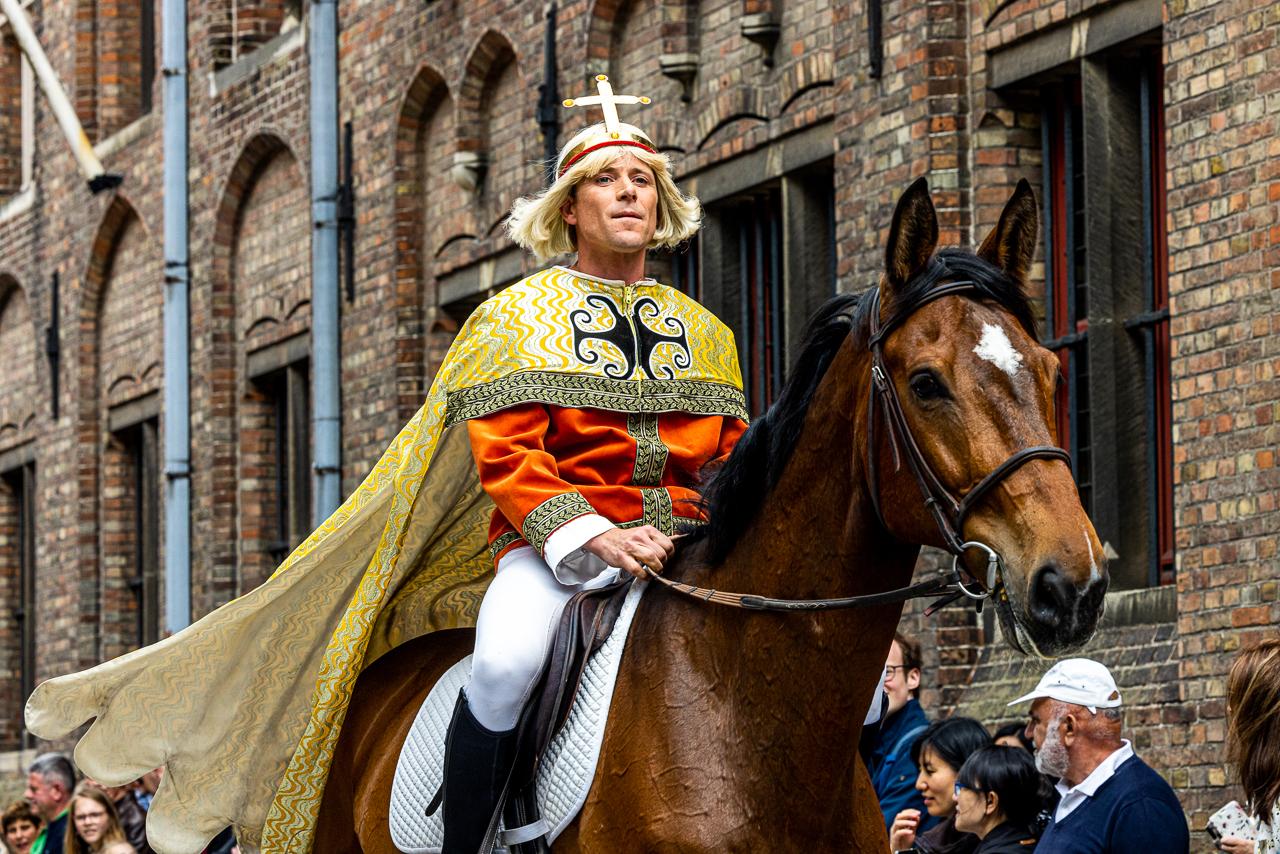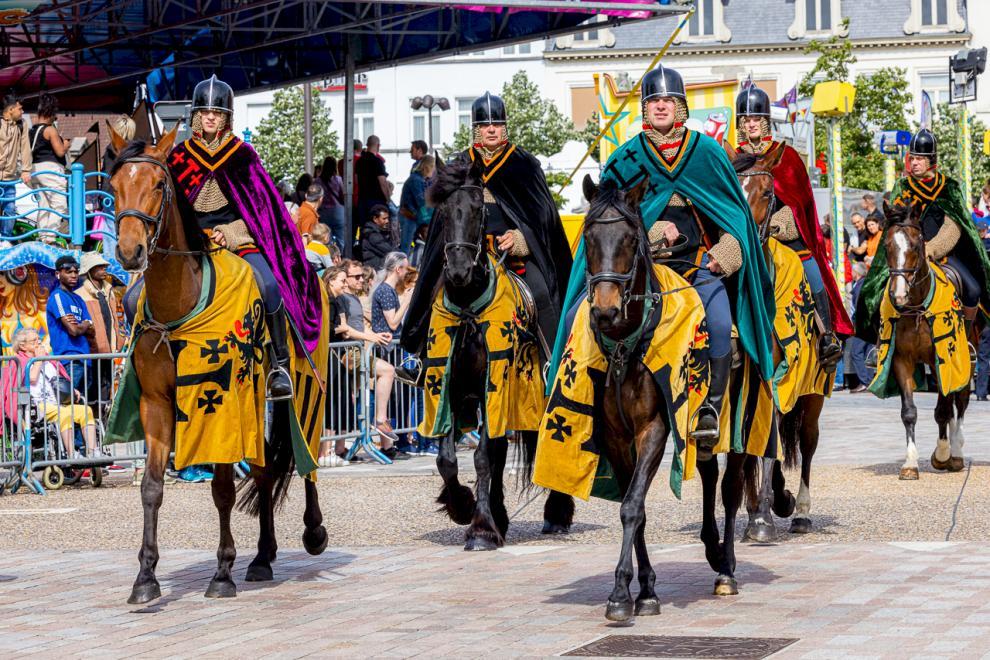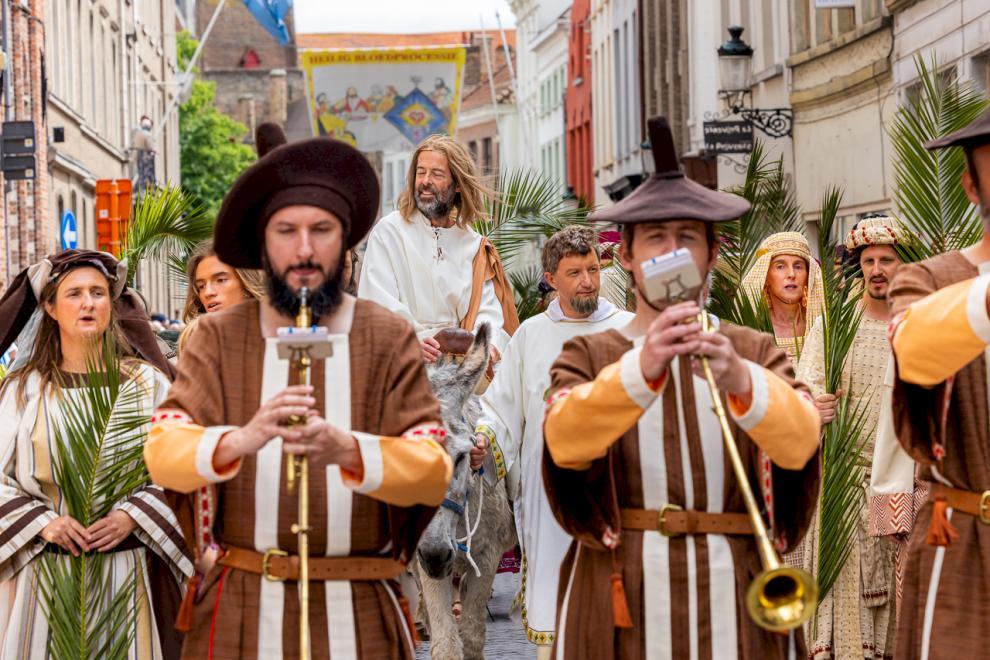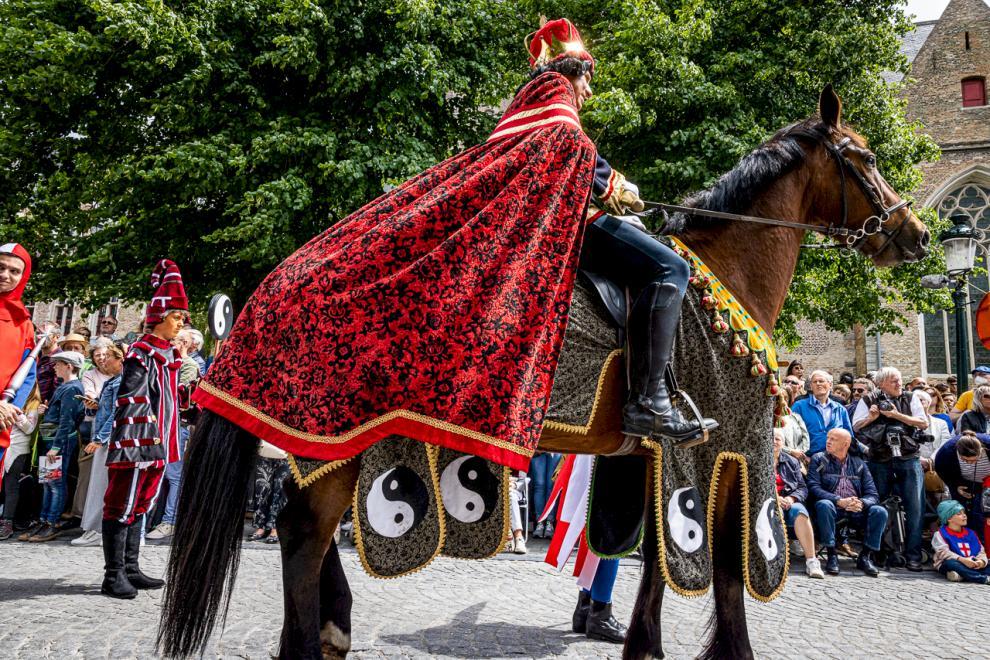Legend
Journey back with us to the 13th century, where the Procession of the Holy Blood finds its origins. According to legend, Count Thierry of Alsace brought the Holy Blood to Bruges after the Second Crusade.

Relic of the Holy Blood
Legend has it that Count Thierry of Alsace, after an adventurous Second Crusade, brought the Holy Blood to Bruges in 1150. He received the relic as a gift from Jerusalem, as a treasure for the city and a sign of his heroism. Together with his brave wife Sibylla of Anjou and the wise abbot Leonius, he placed the relic in the beautiful St. Basil’s Chapel on the Burg. And so began the wondrous story of the Holy Blood in Bruges.
Thierry of Alsace, Count of Flanders
In a distant past, when Flanders was in turmoil, the throne was vacant after the death of Count Charles the Good. William Clito and Thierry of Alsace vied for power. Against the will of Flanders, William Clito became the new count in 1128. Thierry, a descendant of Count Robert I, received support from cities such as Bruges and Ghent. Just a few months later, the rivalry between Thierry and William led to a battle in which William Clito perished, and Thierry of Alsace ascended to the throne. This was recognised by Louis VI of France and King Henry I of England. Thierry managed to maintain a neutral position between France and England. He first married Margaret of Clermont and, after her death, remarried Sibylla of Anjou. After participating in crusades and political intrigues, he returned to Flanders, while Sibylla managed the home front and faced opposition from Baldwin IV, Count of Hainaut, who tried to conquer Flanders. Thierry died in 1168. His legacy forms a colourful chapter in the history of Flanders.
A legend
The story is fascinating but raises questions. Jerusalem, with holy sites like the Church of the Holy Sepulchre, attracted pilgrims, yet none of their accounts mention a Holy Blood relic. This is remarkable. The dating also raises doubts: if the relic came to Bruges in 1150, why does the oldest evidence of its presence in Bruges only date from 1256?
Plundering in Constantinople
What is certain in history is that a relic of the Holy Blood was kept in Constantinople, housed in the Maria Chapel of the imperial palace Bucoleon. This chapel housed various relics of the suffering and death of Christ, including the crown of thorns, the lance, a piece of the cross, the nails and the shroud.
In 1203, the Venetians convinced the crusaders of the Fourth Crusade to attack Constantinople before going to Jerusalem. After conquering the city in 1204, a three-day plundering followed. Baldwin IX, Count of Flanders and a leader of the crusade, was appointed emperor of Constantinople. It is plausible that relics – looted in Constantinople, including possibly the Holy Blood – were brought to Flanders and specifically to Bruges. His daughters Joan and Margaret headed the county. The rock crystal vial in which the coagulated blood is kept also shows features that refer to Constantinople.






